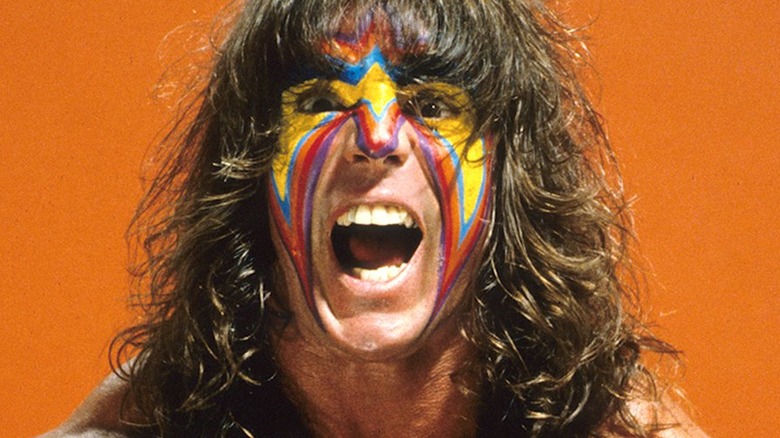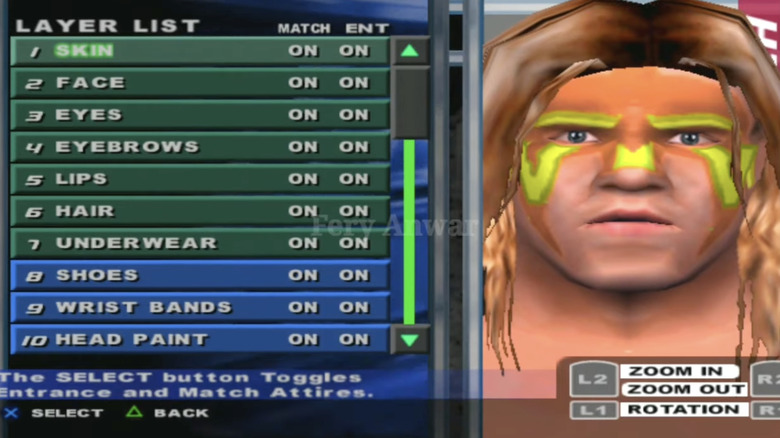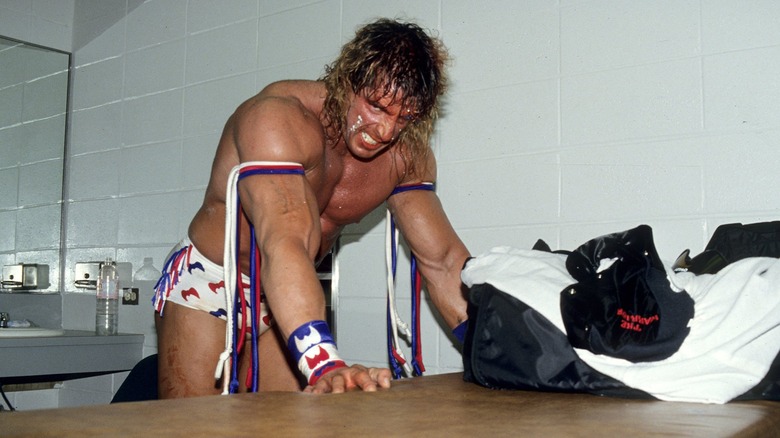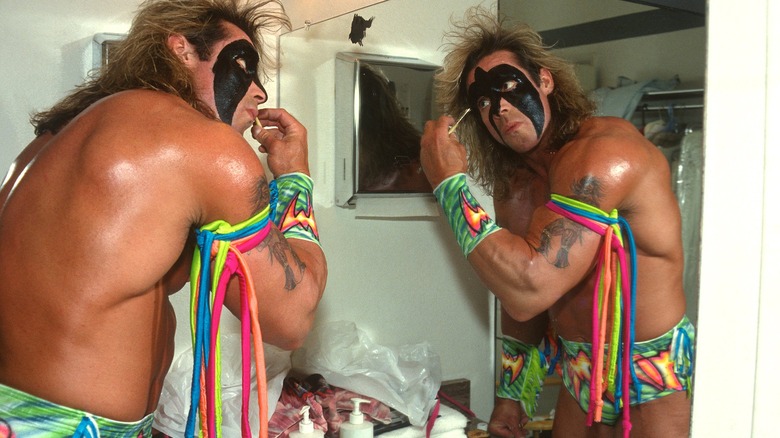Ultimate Warrior Once Sued Video Game Maker THQ Over Likeness Rights
During his time on planet Earth, The Ultimate Warrior — born Jim Hellwig but legally changed to simply "Warrior" over two decades before his death — was a somewhat litigious sort. He and WWE sued each other back and forth multiple times over the course of over a decade and a half, but that was nothing compared to the tidal wave of lawsuits that he unleashed in 2005 and 2006. Not only did he sue WWE over their "Self-Destruction of the Ultimate Warrior" DVD and a former business associate over an unrelated documentary project that fizzled, but he also filed a creative case against THQ, the then-publishers of WWE's video games.
Specifically, Warrior argued that after negotiations between him and THQ about including him in WWE video games broke down, they subsequently included everything needed to create The Ultimate Warrior in their game's "Create-A-Wrestler" ("CAW" for short) mode, including his trademarked logo/face paint design.
THQ, though, argued that the elements used to create Warrior in their games — including the logo, which they said was a more generic "bat" design — were all sufficiently generic on their own, and that there was no way for the average consumer to get the impression that Warrior was affiliated with their games.
So, how did it turn out?
Neither side looked great at first
While The Ultimate Warrior's case sounds a bit thin on the surface, you can get where he's coming from to a point. In one example that he cited, THQ put together promotional materials for the "Day of Reckoning" games indicating that he would be appearing even though Warrior had not signed a licensing agreement with them. As THQ countered in a later filing, though, those were preliminary marketing materials that were retracted before they could go out.
But Warrior also pointed out an IGN.com article previewing "Day of Reckoning 2" that interviewed the developers and clearly stated that Warrior would be in the game, so that matter wasn't exactly settled.
Other parts of Warrior's case were a bit more spurious though, like bringing up how the create-a-wrestler mode allowed players to select "Parts Unknown" as a hometown. Though Warrior was the only wrestler to actually cut promos that framed "Parts Unknown" as an actual place, it had been a staple of pro wrestling for masked and otherwise mysterious characters long before he got into the business.
Warrior also tried arguing that having "Warrior" and "The Warrior" as names that had record announcer dialogue for them was similarly proof of wrongdoing. THQ would counter that it was sufficiently generic and in line with the other selectable nicknames that they made available to players.
Warrior's deposition was an adventure
With the lawsuit dragging out for a few years, The Ultimate Warrior sat for a deposition, giving sworn testimony about all sorts of things that could be relevant to the case. Some detailed excerpts of the deposition were filed as an exhibit in March 2007, where he got incredibly granular about the particulars of his ring entrance.
"Jumping up on the apron, skirting back and forth on the first apron that I jump up on, turning around, running to the ring post, going around the outside of the ring post, shuffling backwards down a second ring apron, doing a complete 360 with my body, grabbing the ropes, leaning back, shaking the ropes, running in the ring, crawling through the ropes, running in the ring, back and forth hitting the ropes, running up into the corners, standing on the second rope, facing the crowd, raising my arms up over—my head," he said when trying to describe his entrance as a series of moves unique to him. "That would be the Ultimate Warrior ring entrance."
Shortly thereafter, Warrior added that running to the ring and shaking the ropes were things only he did. Though he backed down a bit when he was asked if he was saying that other wrestlers didn't run to the ring.
Throw in a back and forth about whether or not a CAW of the lawyer dressed as herself but having all of Warrior's moves would be identifiable as Warrior, and you get a very strange document from the court reporter who was brave enough to transcribe the proceedings.
THQ and Warrior settled in September 2008
After a few years of back and forth, The Ultimate Warrior and THQ moved to have the case dismissed with prejudice (meaning it could not be refiled) in September 2008. After all, it's not that difficult to see why, from THQ's perspective, it was worth paying out a settlement to avoid a trial.
Warrior's case wasn't exactly robust, but unless their own defense was perfect, then the issue of what is and isn't fair game in a character creation suite isn't the kind of thing you want legal precedents set about. If Warrior had gone to trial, won, and prevailed upon appeal, then that would make some very specific case law that would not be good for THQ, much less some of their competitors.
It didn't take long for The Ultimate Warrior to make his way to one of THQ's WWE games, as he was included on the roster of March 2009's "Legends of WrestleMania," an arcade-style game steeped in nostalgia. Two years later, Warrior also made it into 2011's "WWE All-Stars," a spiritual sequel of sorts to "Legends of WrestleMania."
However, he never managed to make it into one of THQ's mainline annual WWE games, as the deal that he made to appear in one of those was with 2K Sports in 2013 after they bought the license in THQ's bankruptcy proceedings, putting him in "WWE 2K14," 2K's first WWE title.



